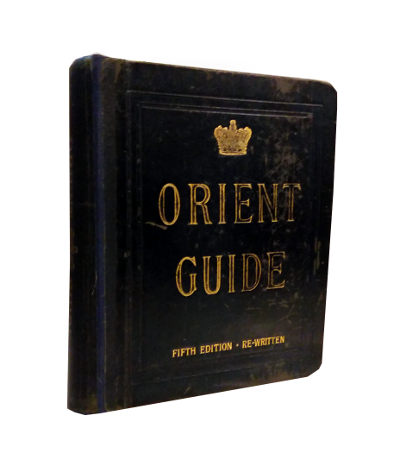Contents include:
From London to Gibraltar
From Gibraltar to Naples
From Naples to Port Said
The Suez Canal
From Suez to Australia
Nature at Sea
The Stars
Australasia
Australia
About the Orient Line (from Wikipedia):
The Orient Steam Navigation Company, also known as the Orient Line, was a British shipping company with roots going back to the late 18th century. From the early 20th century onwards an association began with P&O which became 51% shareholder in 1919 and culminated in the Orient Line being totally absorbed into that company in 1966.
The Orient Line’s beginnings can be traced back to the formation of a shipbroking company by James Thompson (or Thomson) in 1797. The company was operating a small fleet of sailing ships by the early 19th century, and by the middle of the century they were sailing on routes all over the world.
Scotsman James Anderson joined James Thompson & Co. in 1828, his nephew James George Anderson joined the firm in 1854, and by 1863 it had been restyled Anderson, Thompson & Co. With the death of the last member of the Thompson family it was in 1969 restyled Anderson, Anderson & Co. The inauguration of a liner service to Australia with the packet Orient in 1866 saw the company trade as The Orient Line of Packets, regularly shortened to Orient Line.
A close association with the Peninsular & Oriental Steam Navigation Company began at the turn of the 20th century with the two companies sharing an Australian Government mail contract. Each company had a vessel sailing from England to Australia every two weeks, resulting in a weekly service of fast mail ships. This was at a time of rapid expansion for the Orient Line, with a succession of larger ships being built. All had names starting with ‘O’, such as Otway, Osterley, Orsova, Otranto, Ortona and Orvieto – a quintet of 12,000-ton ships – entering service in 1909. The First World War saw all of the company’s ships commandeered for war service, with several losses. Those that survived returned to the England – Australia service in 1919.







